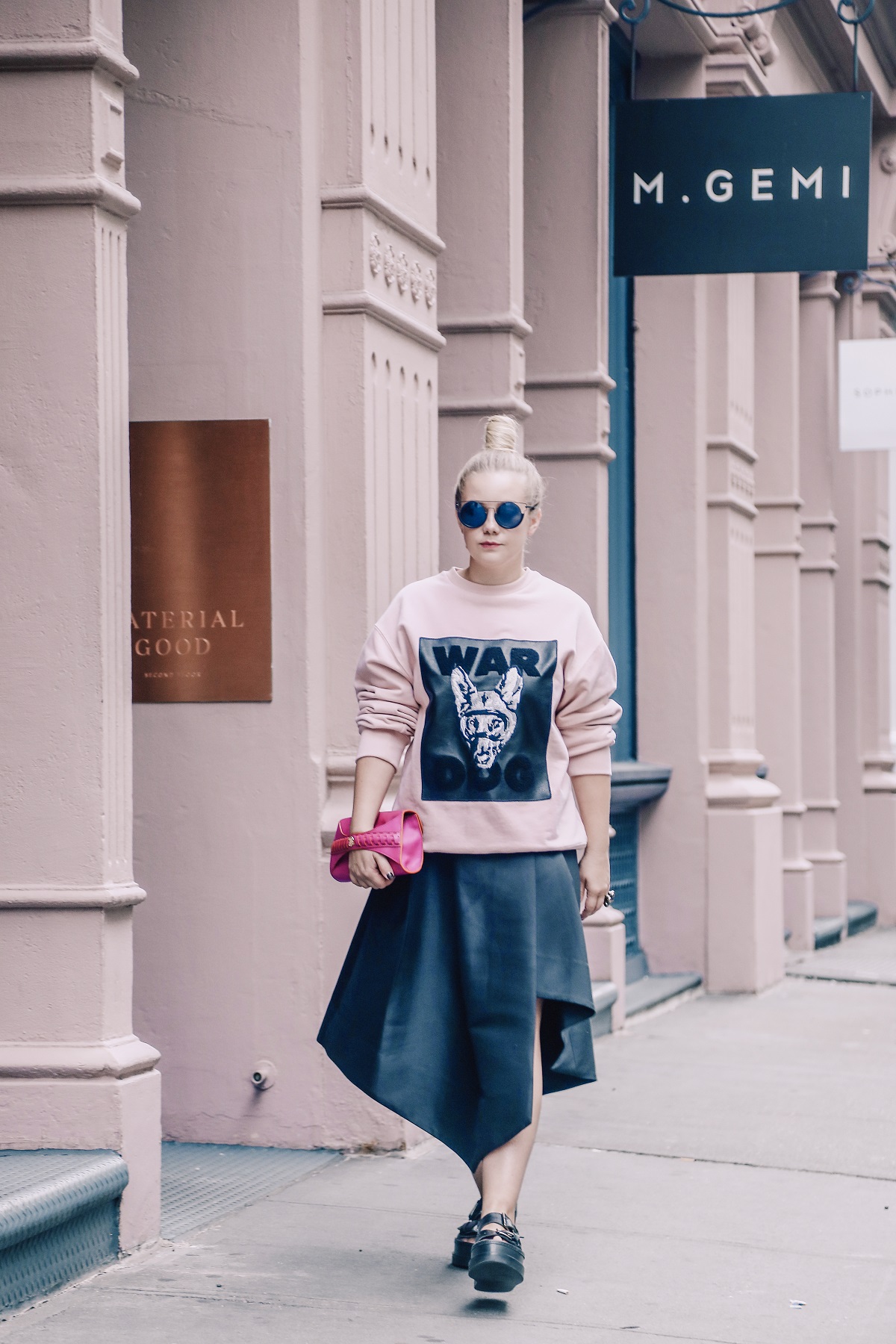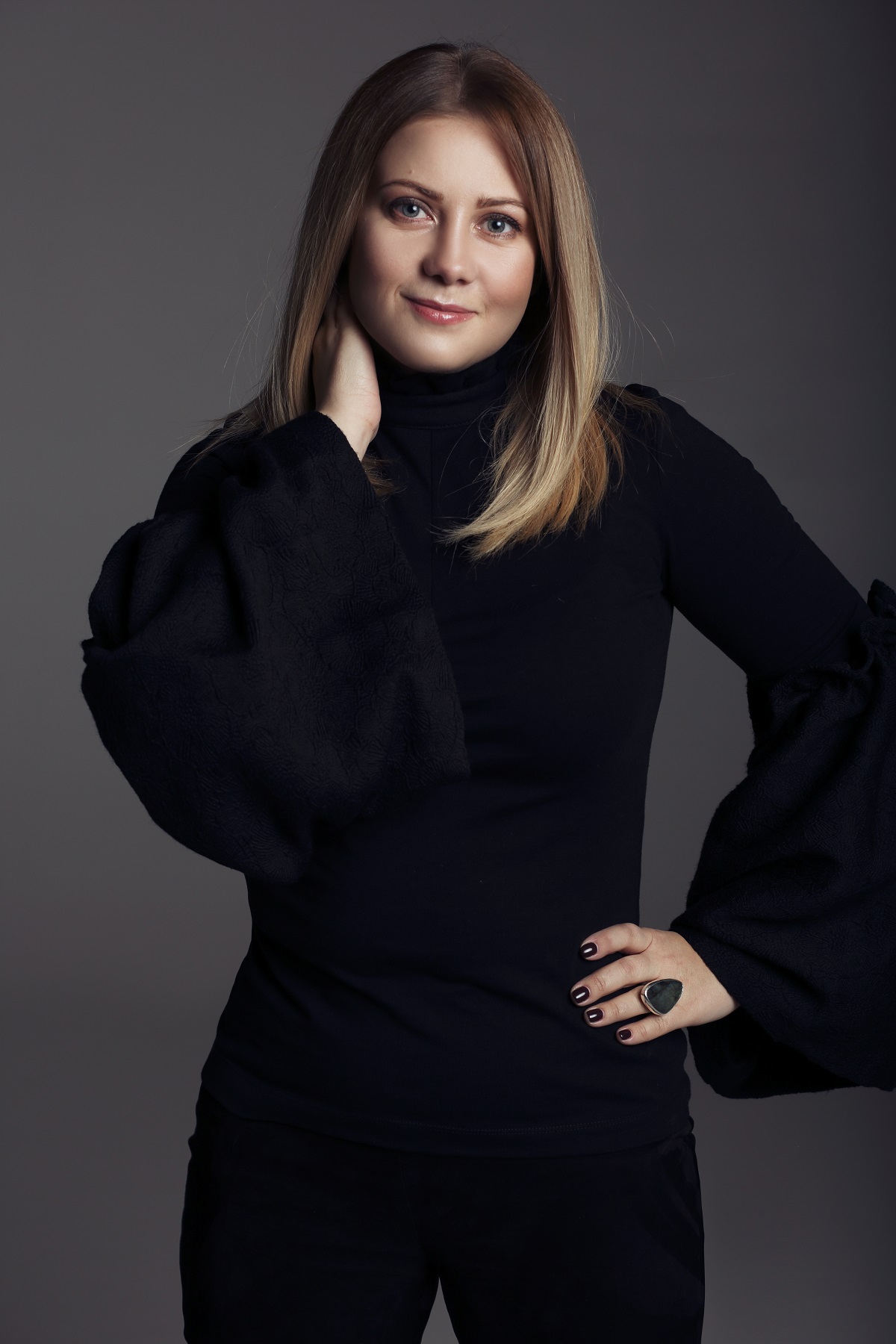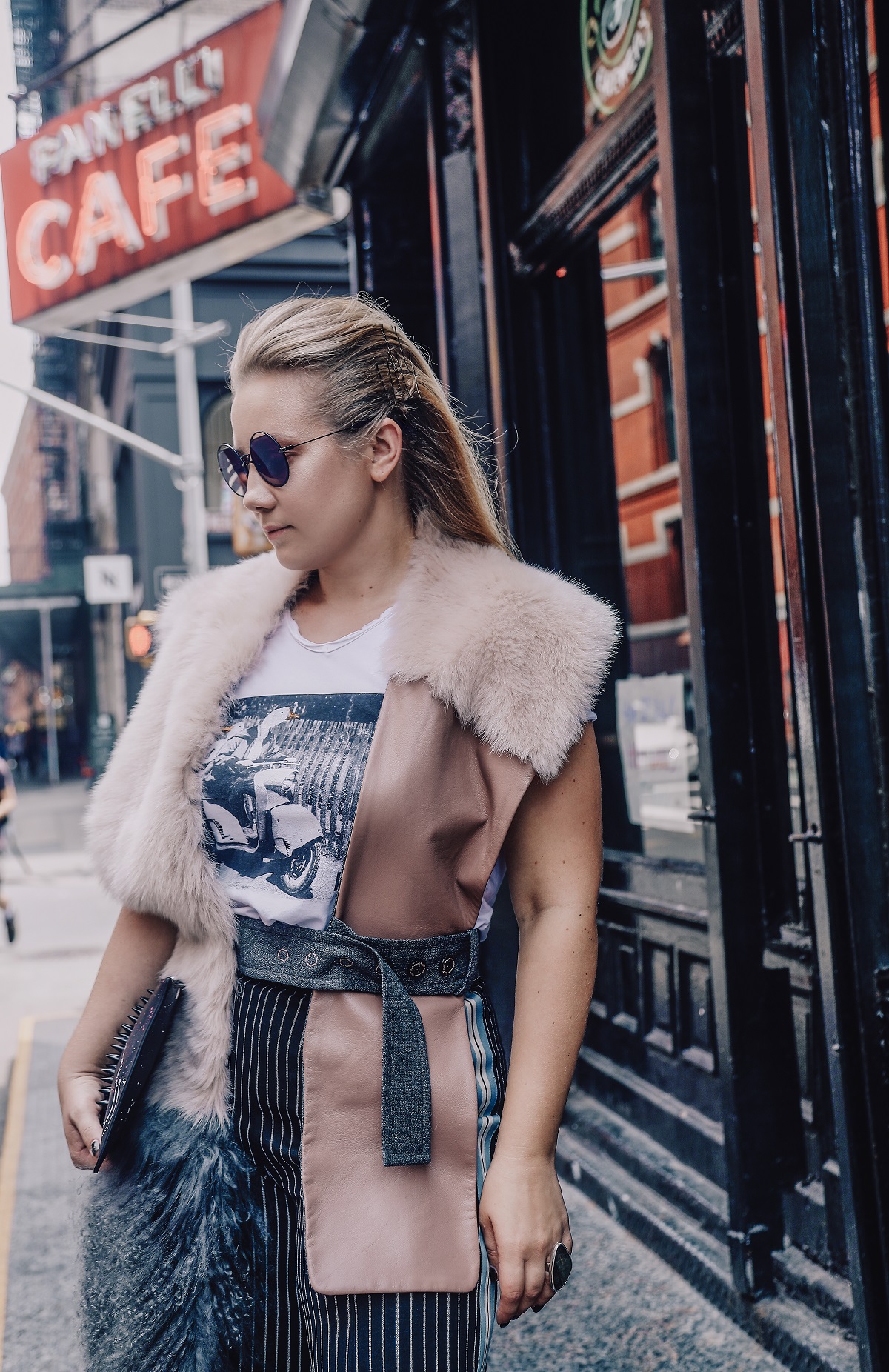Elga Chomicka: “We work with people, not things”
Interview with a top stylist
2019-07-12

Elga Khomitska, an image designer from Latvia, a personal style consultant and a practicing stylist with extensive experience, conducted an author’s seminar in Kyiv. We did not miss the opportunity to communicate with a professional in his field and talked with Elga about the main trends of this spring, the lifespan of trends and the components of each person’s image.
The article was first published in Makeup&YOU Professional magazine.
Elga, what fashion trends will be the most popular this spring? One of the most global trends of the spring season is the aesthetics of the 2000s. All elements of Paris Hilton's iconic looks will be at the peak of popularity: low-waisted trousers, tight minidresses, miniskirts and crop tops. The second trend is a new vision of clothing for women in business. A return to individual tailoring of classic clothes, suits with a certain twist, masculinity in women's collections is returning to fashion. We remember how Coco Chanel wore men's trousers, Marlene Dietrich shone as a gentleman with a top hat and red lipstick, and Yves Saint Laurent dressed a woman in a tuxedo in the 60s. This direction originates from the past and moves into the present. Women who care about their appearance want to show their individuality even in a work environment. This spring and summer, in an informal office environment, such non-standard combinations as a blazer and bicycle shorts or a tuxedo and a linen-style top are acceptable. The dress code has ceased to be observed even in serious financial institutions in London, which have always been considered the standard of business style. Nowadays, unusual cuts, asymmetry, or, for example, colorful checks for a classic suit are actively used - all this indicates a completely new approach to creating business clothes. Another top social trend is escapism, or escape from reality, dictated by the philosophy of ethical fashion. Now many people are paying special attention to this topic and talking about the importance of conscious consumption. This direction is characterized by a return to nature, muted tones, moving from brown to the color of grass, sand, stone. Ethnic motifs, asymmetry, knitting, decorations made of shells and natural stones, suede, fringe, elements of oriental styles and even hippie style are welcomed in clothing. Now there is an active return to very comfortable, practical, understandable clothing. And one more trend that I want to highlight is fashionable grace, or the trend towards new femininity. This trend is closely related to ballet and will develop more and more every day. I recommend looking for inspiration in the magnificent Dior spring-summer 2019 show. This gentle, romantic and feminine trend is characterized by airy outfits like ballerinas, stylized pointe shoes, pleated shoes, transparent fabrics, jewelry, pastel shades. For example, the Max Mara brand shot an advertising campaign for its fall collection in a ballet class. During the seminar, you discussed the question of how to avoid becoming a victim of trends. What do you mean by this? I teach you to treat trends consciously and not become a slave to them. We must understand what this or that trend means, where it came from, whether it is close to us and whether we want to try it on ourselves. A slave to trends puts on things simply because it is fashionable, without putting any philosophy into this process. But the image can be harmonious only when it is in tune with the inner state of a person. My main philosophy as a stylist: we work with people, not with things. When I talk about trends, my main task is to tell how the trend appeared, where and why, what influenced its formation. Nowadays individuality is in fashion, and trends are very polar, so everyone will find something of their own in fashion. You are not a slave to trends if you know them, understand them and at the same time combine them well in your wardrobe. How long does a trend last? How to understand at what point it becomes an anti-trend? There are trends that can remain relevant for several seasons in a row. Other trends are like a flash: they are relevant only for one season, after which they disappear. As a rule, what quickly becomes fashionable quickly fades away. And there are things that will never go out of style, such as a sexy and sensual lingerie-style dress. Such trends live for years, decades. Trends mutate, originate in the past and change over time. I really don’t like the question about anti-trends, because it is impossible to identify something that is not in fashion at all now. For example, the Western style is no longer as relevant as it used to be, but at the same time, western boots are now a real must have. There are simply areas that are currently losing their relevance. But you also need to be able to give new breath to old things. How relevant do you think the division into clothing styles remains: classic, romantic, casual, boho, and so on? Nowadays individuality is in fashion, so styles are increasingly intertwined. You need to know styles in order to be able to understand them, combine them and break the rules.
During the seminar, you discussed the question of how to avoid becoming a victim of trends. What do you mean by this? I teach you to treat trends consciously and not become a slave to them. We must understand what this or that trend means, where it came from, whether it is close to us and whether we want to try it on ourselves. A slave to trends puts on things simply because it is fashionable, without putting any philosophy into this process. But the image can be harmonious only when it is in tune with the inner state of a person. My main philosophy as a stylist: we work with people, not with things. When I talk about trends, my main task is to tell how the trend appeared, where and why, what influenced its formation. Nowadays individuality is in fashion, and trends are very polar, so everyone will find something of their own in fashion. You are not a slave to trends if you know them, understand them and at the same time combine them well in your wardrobe. How long does a trend last? How to understand at what point it becomes an anti-trend? There are trends that can remain relevant for several seasons in a row. Other trends are like a flash: they are relevant only for one season, after which they disappear. As a rule, what quickly becomes fashionable quickly fades away. And there are things that will never go out of style, such as a sexy and sensual lingerie-style dress. Such trends live for years, decades. Trends mutate, originate in the past and change over time. I really don’t like the question about anti-trends, because it is impossible to identify something that is not in fashion at all now. For example, the Western style is no longer as relevant as it used to be, but at the same time, western boots are now a real must have. There are simply areas that are currently losing their relevance. But you also need to be able to give new breath to old things. How relevant do you think the division into clothing styles remains: classic, romantic, casual, boho, and so on? Nowadays individuality is in fashion, so styles are increasingly intertwined. You need to know styles in order to be able to understand them, combine them and break the rules.  Is it possible to look fashionable while choosing inexpensive clothing brands? One hundred percent! Now any mass market covers most of the trends. At the same time, he does not copy luxury brands, but creates trends himself. Which things are worth investing more in, and which can you spend less on? At your discretion. This is completely unimportant, since fashion has become democratized. Now you can safely combine a dress from a mass-market brand and a necklace with diamonds, and it won’t be bad manners. There is an opinion that it is better to choose accessories and shoes from luxury brands. I agree with this in terms of shoes, but now the mass market makes bags that are very interesting and original. What does a person's image consist of? This is a very global question that relates to image theory. I really like the philosophy of Konstantin Bogomolov, at whose school I teach. According to his theory, image consists of five components. A costume is what you put on yourself, right down to the tattoos and fragrances. The second is your appearance, which is given by nature. The third is the surroundings, what is around you. The fourth is your social role: who you are, how you present yourself, what you tell about yourself. And fifth - history: what you say, what you talk about and how you do it. The main task of the image maker is to ensure that all components of the image work and sound. This applies to gait, demeanor, facial expression, and even a phone, laptop, car, and so on. What role do hair and makeup play in your image? Hairstyle and makeup are the first component of the image and at the same time play a very important role. But I can’t tell a person what kind of hairstyle he needs until I talk to him and understand what kind of image I can choose for him. Many factors need to be taken into account, so I will not be able to conduct a consultation on choosing a hairstyle or makeup separately from an image consultation. Everything should be in the same style, connected, in harmony, and then it will be professional.
Is it possible to look fashionable while choosing inexpensive clothing brands? One hundred percent! Now any mass market covers most of the trends. At the same time, he does not copy luxury brands, but creates trends himself. Which things are worth investing more in, and which can you spend less on? At your discretion. This is completely unimportant, since fashion has become democratized. Now you can safely combine a dress from a mass-market brand and a necklace with diamonds, and it won’t be bad manners. There is an opinion that it is better to choose accessories and shoes from luxury brands. I agree with this in terms of shoes, but now the mass market makes bags that are very interesting and original. What does a person's image consist of? This is a very global question that relates to image theory. I really like the philosophy of Konstantin Bogomolov, at whose school I teach. According to his theory, image consists of five components. A costume is what you put on yourself, right down to the tattoos and fragrances. The second is your appearance, which is given by nature. The third is the surroundings, what is around you. The fourth is your social role: who you are, how you present yourself, what you tell about yourself. And fifth - history: what you say, what you talk about and how you do it. The main task of the image maker is to ensure that all components of the image work and sound. This applies to gait, demeanor, facial expression, and even a phone, laptop, car, and so on. What role do hair and makeup play in your image? Hairstyle and makeup are the first component of the image and at the same time play a very important role. But I can’t tell a person what kind of hairstyle he needs until I talk to him and understand what kind of image I can choose for him. Many factors need to be taken into account, so I will not be able to conduct a consultation on choosing a hairstyle or makeup separately from an image consultation. Everything should be in the same style, connected, in harmony, and then it will be professional.  Where does a stylist’s individual work with a client begin? First, I conduct a free consultation-acquaintance so that both I and the potential client understand whether we will be comfortable working together. Nowadays, most often people come to me based on reviews from other clients and are immediately ready to work without a preliminary conversation. But I advise aspiring stylists to always have a free first meeting and not be afraid of it, because you need to get to know, see and hear each other. What is important to consider when creating a style yourself? Where to find inspiration in this case? I'll start with the most important thing. The first thing you need to do is love yourself and accept yourself. The second thing is not to be equal to others, to show your individuality, to look for your uniqueness and not be afraid to show it. And third, follow fashion, analyze it, apply it to yourself and experiment. Observation, so to speak, is also important. Vogue is the fashion bible. I also recommend reading The Business of Fashion, watching shows, going to exhibitions, theater performances, studying the history of fashion if you really want to understand style. You need to constantly be up-to-date – updated – and monitor the eternal flow of information. This is a huge job that not everyone wants to do on their own, which is why there are personal style and image consultants like me. (Smiles.)
Where does a stylist’s individual work with a client begin? First, I conduct a free consultation-acquaintance so that both I and the potential client understand whether we will be comfortable working together. Nowadays, most often people come to me based on reviews from other clients and are immediately ready to work without a preliminary conversation. But I advise aspiring stylists to always have a free first meeting and not be afraid of it, because you need to get to know, see and hear each other. What is important to consider when creating a style yourself? Where to find inspiration in this case? I'll start with the most important thing. The first thing you need to do is love yourself and accept yourself. The second thing is not to be equal to others, to show your individuality, to look for your uniqueness and not be afraid to show it. And third, follow fashion, analyze it, apply it to yourself and experiment. Observation, so to speak, is also important. Vogue is the fashion bible. I also recommend reading The Business of Fashion, watching shows, going to exhibitions, theater performances, studying the history of fashion if you really want to understand style. You need to constantly be up-to-date – updated – and monitor the eternal flow of information. This is a huge job that not everyone wants to do on their own, which is why there are personal style and image consultants like me. (Smiles.)Anastasia Buzdanova
You can view the electronic version of Makeup&YOU Professional magazine or subscribe here .
Read also
- Trends and tendencies: what fashion trends can we expect in 2022?
- Trends in men's haircuts and coloring for fall 2021
- Interview with Danessa Myricks: how to “accidentally” become a makeup artist and brand founder
- Trends in coloring and haircuts for spring-summer 2021
- From idea to implementation: how to start teaching?
- Gleb Atamanenko about participating in competitions and working with his fears
- Ziortza Zarauza: about training, plans and women in hairdressing
- Hair Tattoo: how relevant is this art haircut?
- Sergei Nikitin: “We need to constantly learn and improve”